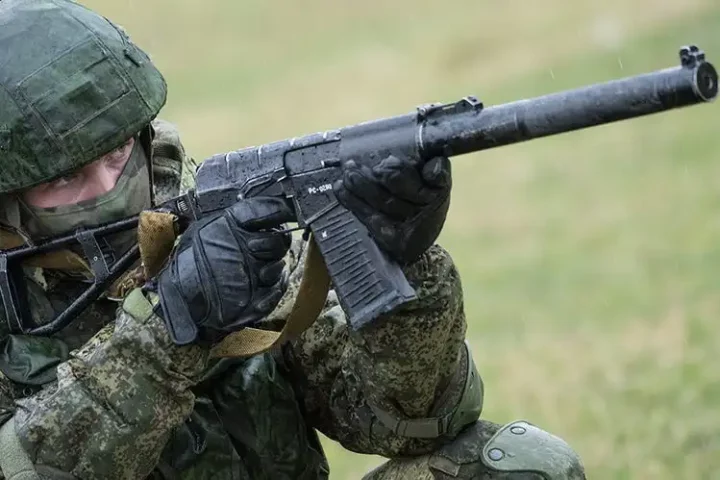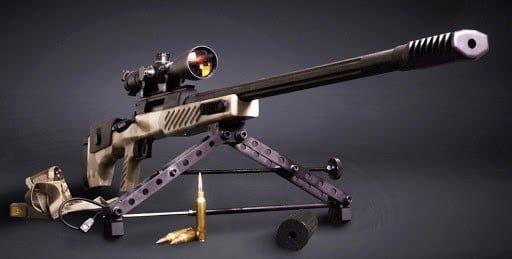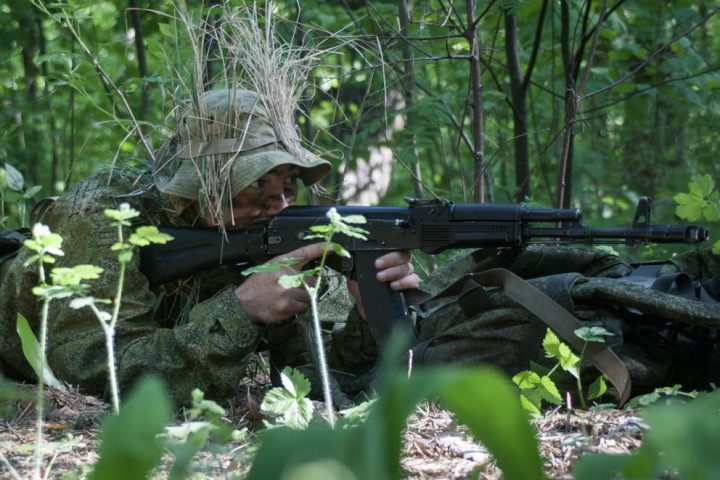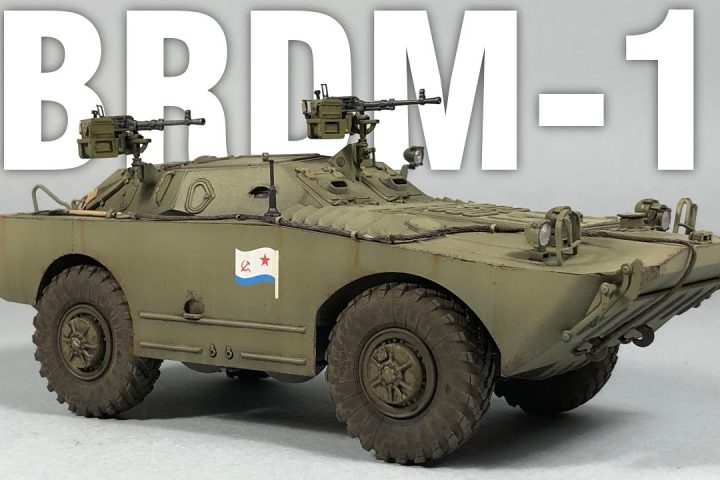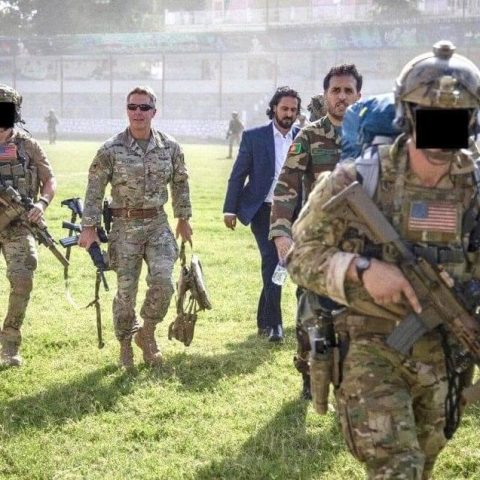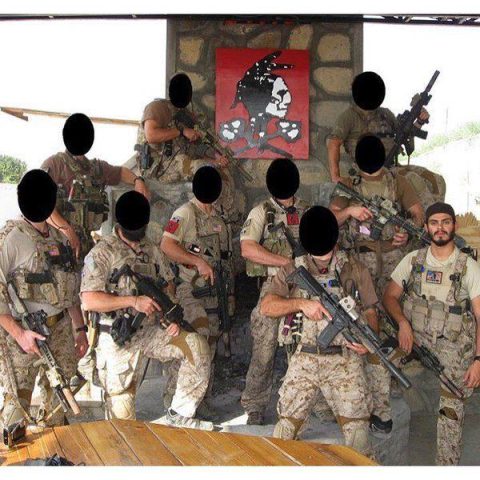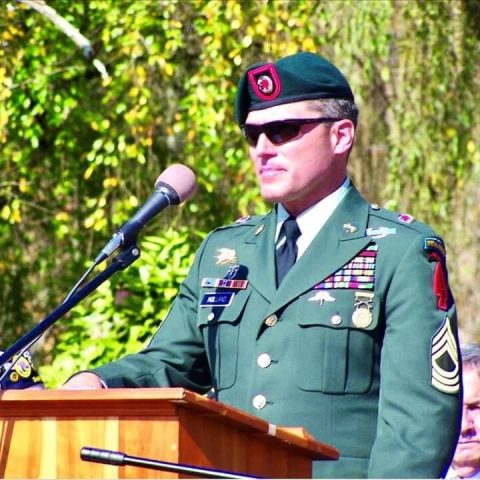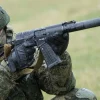The PB silenced pistol is a highly specialized, compact semi-automatic sidearm designed for use by special operations units. Originally known as the Pistolet Besshumnyj (Noiseless pistol) and designated as the 6P9 by the Soviet/Russian Army, this pistol was first developed in 1967 for use by Spetsnaz elements of the Soviet Army, as well as by operatives of the KGB. It is chambered for 9×18 mm Makarov ammunition, making it a powerful and versatile weapon in specialized situations.
Introduction
The PB pistol shares several key features with the Makarov PM pistol, such as being blowback-operated, having an open hammer and a slide-mounted safety that automatically decocks the hammer when engaged, and utilizing interchangeable magazines. However, the PB also boasts a unique feature in the form of its integral two-part silencer.
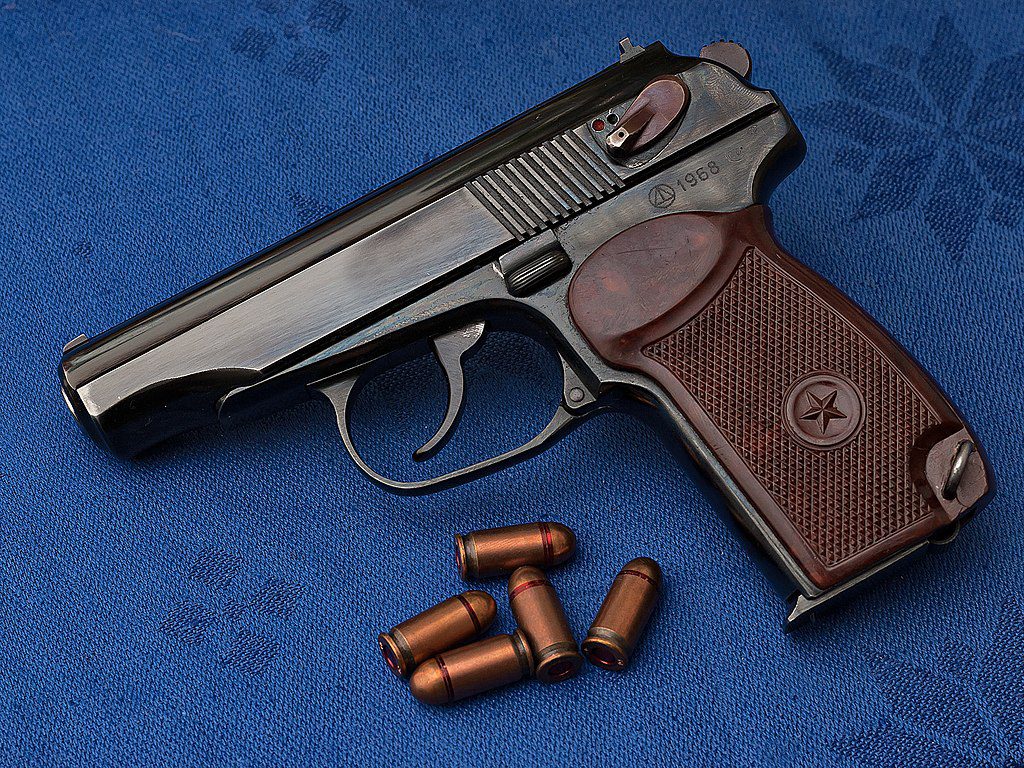
The PB-silenced pistol was specifically developed to meet the requirements of the Soviet Army. It is based on a heavily modified Makarov pistol, and many parts, such as the magazine and trigger mechanism, are interchangeable between the two models. Adopted in 1967, the PB was issued to special forces and reconnaissance units and utilized by KGB operatives, although it was not particularly popular among these groups. Production of the PB was halted in the mid-1980s, though some sources indicate that it was resumed during the 2000s.
The PB was eventually replaced by newer, more compact, and quieter models, such as the PSS pistol and PSS-2 pistol. However, the PB is still in limited use among the Russian armed forces and law enforcement agencies. The PB was never exported outside the Soviet Union, but it may remain in service with some former Soviet republics.
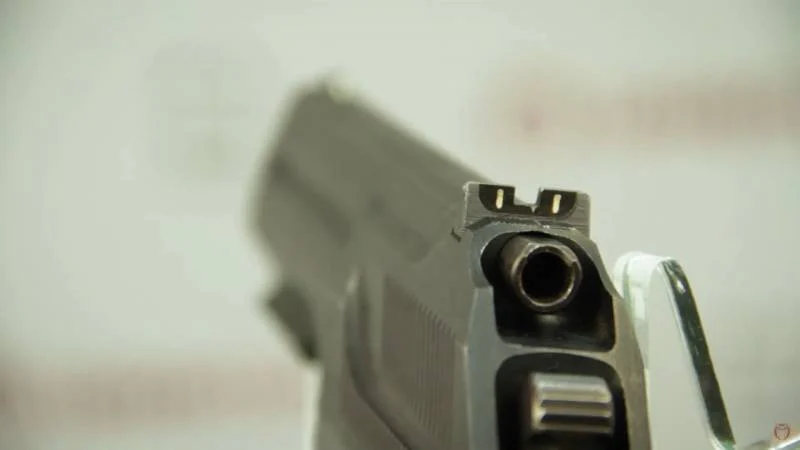
Design
The PB silenced pistol uses the standard 9×18 mm Makarov ammunition, also designed by Nikolay Makarov in conjunction with his eponymous pistol and adopted by the Soviet Army in the early 1950s. It is a larger version of the 9×17 mm (.380 ACP) round developed by John Browning. The Soviet Union deliberately chose this ammunition as it was incompatible with any Western 9 mm pistols, meaning that in the event of war, captured Soviet ammunition stocks would be useless to the enemy.
The 9×18 mm Makarov round became the standard pistol and submachine gun ammunition for the Soviet Union and Warsaw Pact countries, as the Soviets required their allies to use the same ammunition. Compared to the Western 9×19 mm Parabellum round, the Makarov round is less powerful and has a lower penetration capability.
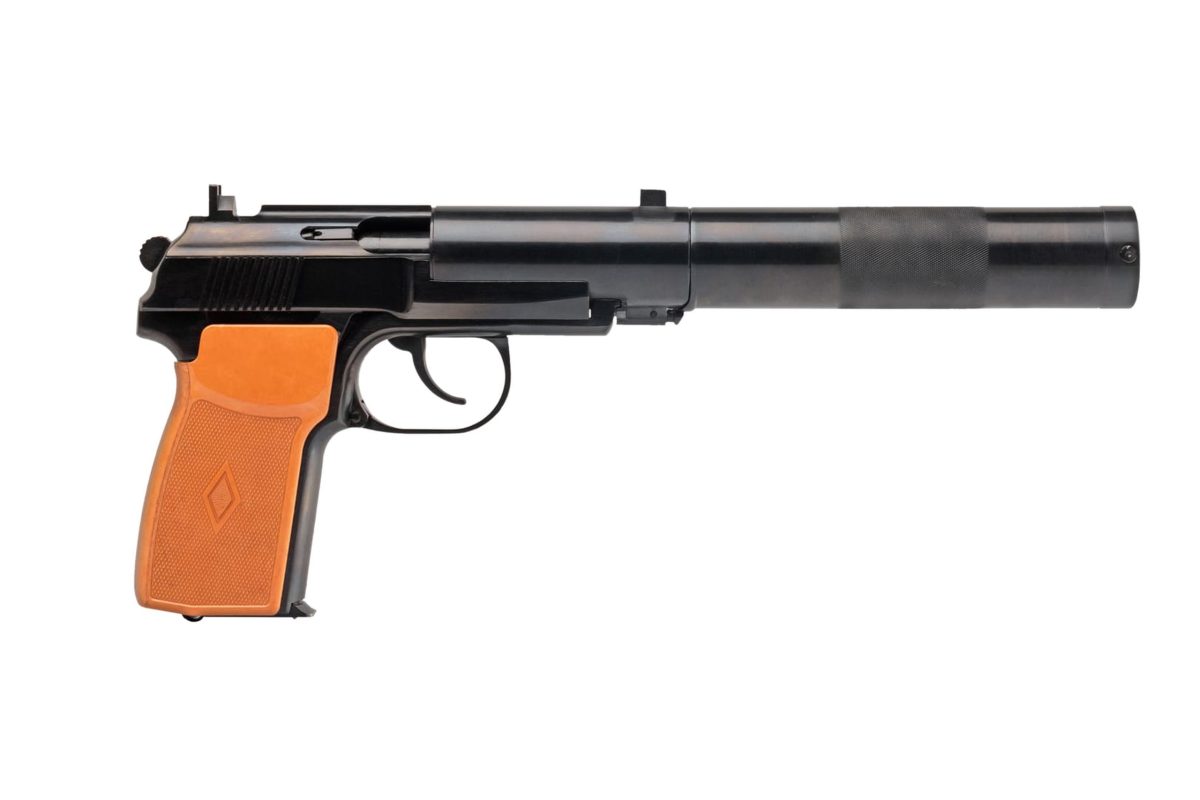
Silencer
The PB silenced pistol features an unusual yet straightforward integral silencer design. The front portion of the silencer can be quickly detached for more convenient carrying, storage, and maintenance and is typically only attached before use. The rear part of the silencer is integrated into the barrel. The barrel is also specially ported to extract excessive powder gases and decrease the muzzle velocity below the speed of sound.
In emergencies, the PB can be fired even with the silencer removed. This is a useful emergency feature, even though it will significantly increase the sound signature. It is worth noting that most other weapons with integral silencers cannot be fired with the silencer detached.
Noise-level
The PB silenced pistol is not entirely silent, despite its design intended to reduce noise. Although the level of sound reduction is significant, the majority of the noise is not produced by the clank of the slide. At night, the sound can be heard at 50 meters, which is this pistol’s maximum range of effective fire. This limitation was one of the reasons why the PB was not widely popular among its users.
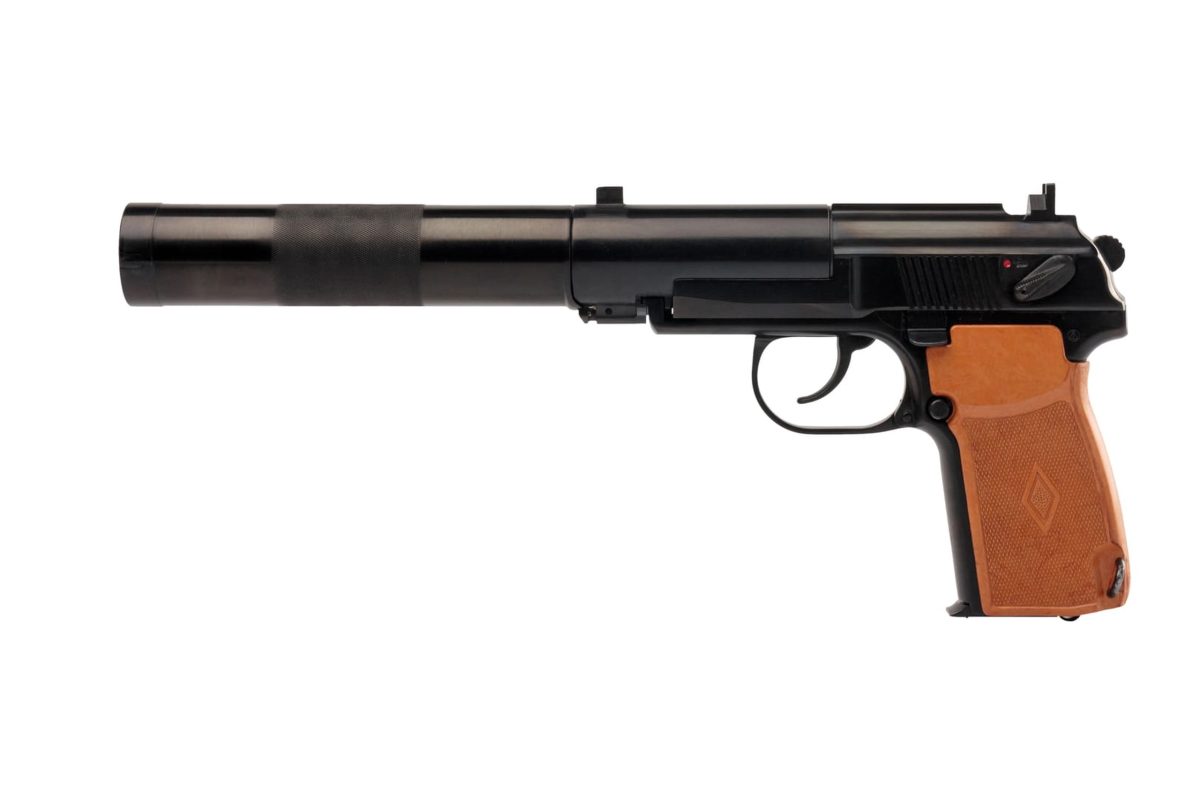
Action
The PB silenced pistol has an all-metal construction and is blowback-operated. It features a double-action trigger, allowing it to be fired both in double-action and single-action sequences. A manual safety switch is also located on the slide for added safety.
Other
The PB silenced pistol is fed by an 8-round magazine, which is interchangeable with the magazine of the Makarov pistol. The magazine release knob is located at the bottom of the grip. The PB has fixed iron sights featuring luminous inserts for night shooting. The sights are set at 50 meters and are not adjustable, making the effective range of this pistol up to 50 meters.
The PB is carried in a specialized holster with separate compartments for the weapon and the detached front part of the silencer. The holster also includes a compartment for a spare magazine, and a cleaning rod is attached to the holster. Some operators have been reported to cut a hole in the standard holster, allowing them to carry the pistol with the silencer attached.
Technical specifications
| Country of origin: | SSSR |
| Manufacturer: | Kalashnikov |
| Entered service: | 1967 |
| Caliber: | 9 mm |
| Weight (unloaded with silencer): | 970 g |
| Length: | 310 mm complete; 170mm with the front part of the silencer removed |
| Barrel length: | 104 mm |
| Muzzle velocity: | 300 m/s |
| Magazine capacity: | 8 rounds |
| Sighting range: | 50 m |
| Range of effective fire: | 25 m |



